Unless you have a major aversion to architecture or religion, La Sagrada Familia is a must-see during your trip to Barcelona.
It’s the city’s major tourist attraction, so visiting it is a pretty slick, painless experience, but there are still some things to bear in mind.
As a Barcelona local living in the city of the last decade, I’ve seen a lot of tourists come and go — and seen a few of the mistakes people make when visiting the Sagrada Familia.
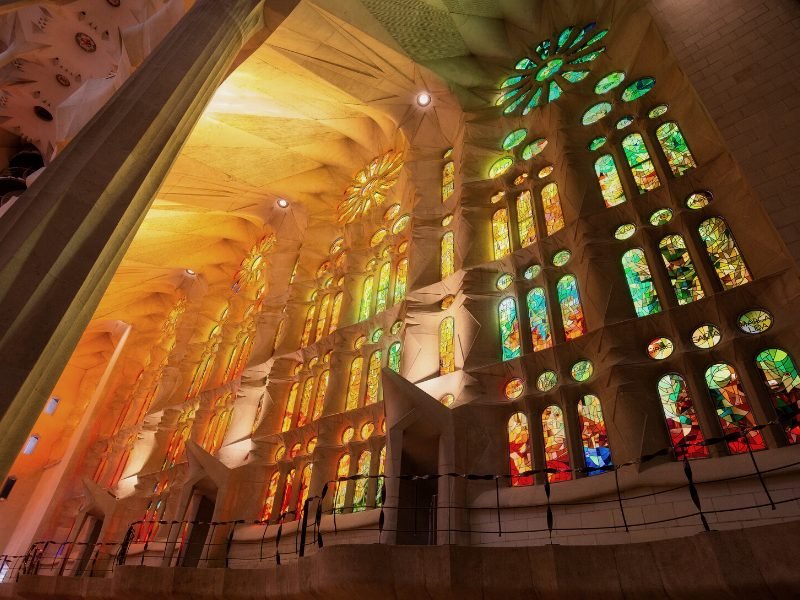
I’m here to illuminate them so you don’t have to learn the hard way!
Here’s my expert guide to visiting La Sagrada Familia without the fuss.
Mistakes to Avoid when Visiting the Sagrada Familia
Don’t call it a cathedral!
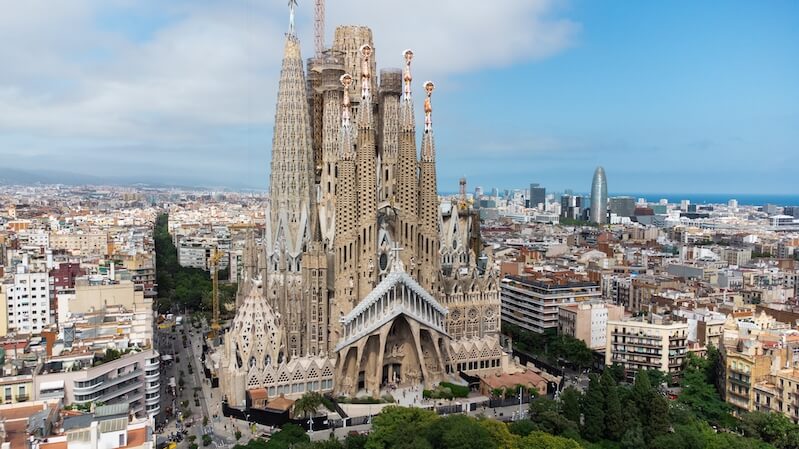
We tend to think of all show-stopping churches as cathedrals, but La Sagrada Familia is actually a basilica, which is a church with special privileges that can only be conferred by the Pope.
La Sagrada Familia isn’t the only basilica in Barcelona, indeed three more of the city’s most famous churches have the same honor.
Those three are Santa Maria del Mar, Santa Maria del Pi and La Basílica de Nuestra Señora de la Merced.
All of them are within walking distance of the Barcelona port.
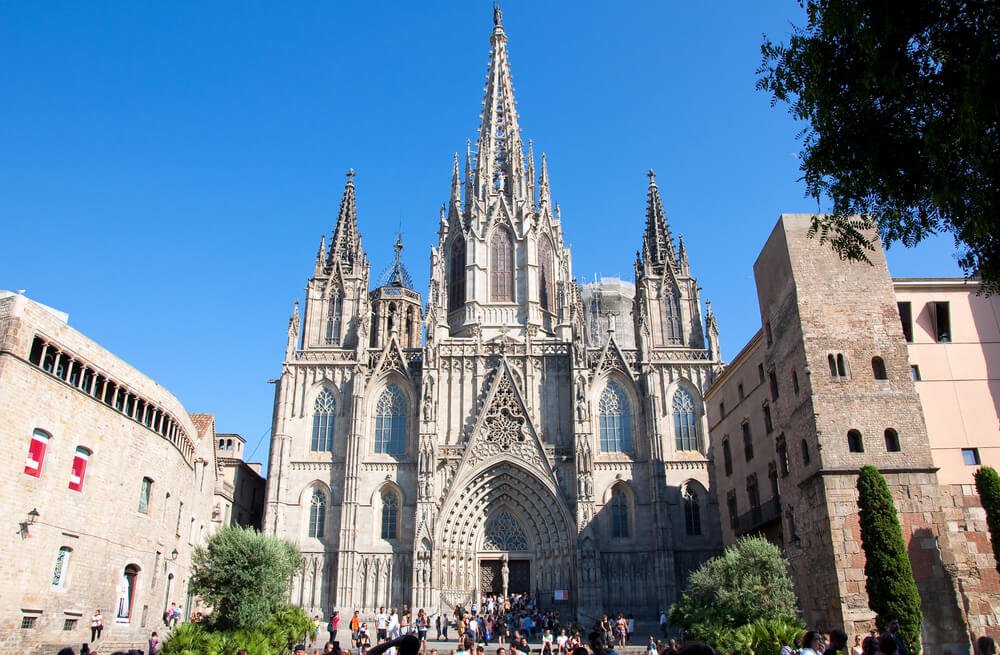
Barcelona does have a cathedral, and it’s well worth a look too: not far from Plaça Catalunya, it can make for a suitably Gothic stop on a tour through Barri Gòtic.
The cathedral is called, well, Catedral de Barcelona, or its fancy-schmany churchy name is the Cathedral of the Holy Cross and Saint Eulalia.
Don’t go inside if you don’t want to!
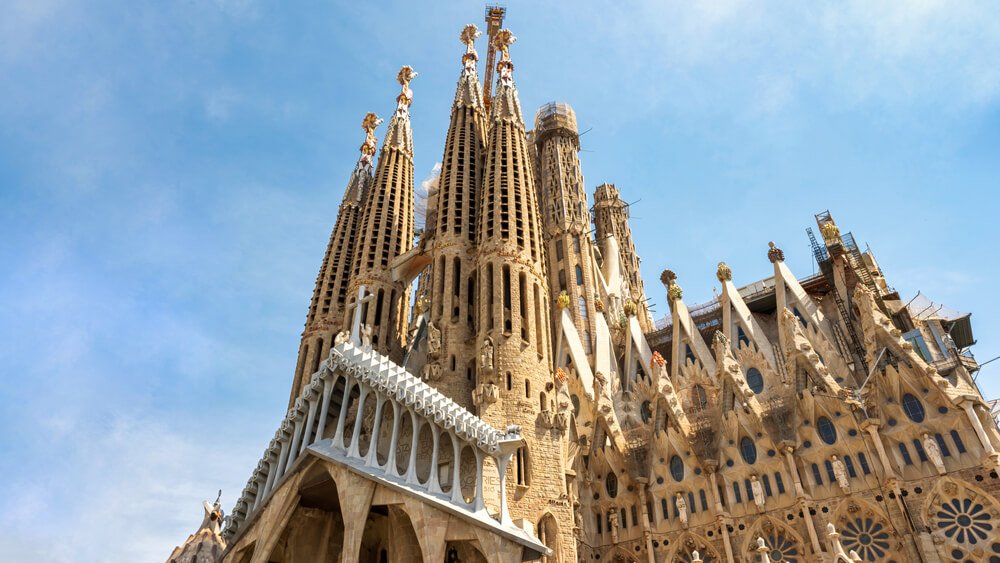
Most of the tips for visiting the Sagrada Familia below are aimed at people who plan to buy a ticket to go inside, but don’t feel obliged if it’s not your thing.
As with most of Barcelona’s architectural attractions, you have a decision to make: do you prefer to see it just from the outside for free, or will you feel like you are short-changing yourself?
La Sagrada Familia’s interior certainly has lots of points of interest – it’s definitely not one of those buildings which is gorgeous outside but unremarkable within.
But it is still going to cost you more than twenty bucks to visit the interior, as well as involve a swarm of other tourists, so ask yourself how important it is to you.
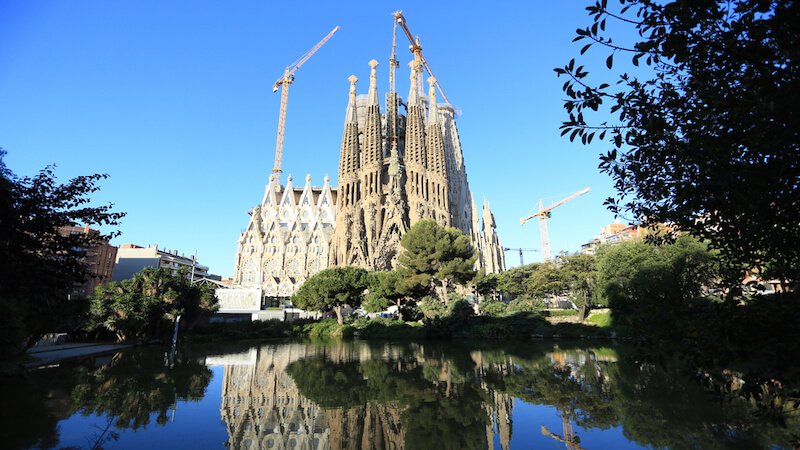
If you opt against buying a ticket, there are still a bunch of photo opportunities.
The two famous façades of the building both have small parks in front of them, ideal for taking snaps, sitting and contemplating the basilica’s beauty, or maybe even having a picnic.
Even if you never go inside, it’s still a sight worth seeing.
Don’t buy tickets on-site.
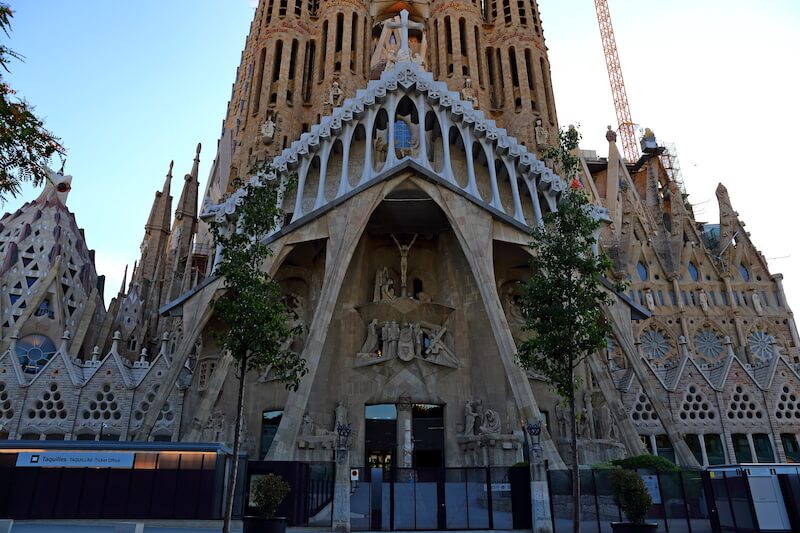
If you are going to go inside, remember this is one of the most-visited sites in the country, so it’s a good idea to buy tickets in advance.
If you don’t, not only are you likely to find big lines at the ticket office, you might even find tickets have sold out for the day!
Buying tickets online is simple — you can buy skip-the-line tickets here, or book a ticket for a guided tour here.
All tours come with the audioguide app as standard, but the difference in cost between the basic package and a guided tour isn’t that much more, and so it’s well worth thinking about.
Don’t forget the towers!

For not much extra, you can add on the towers of the Sagrada Família as part of your visit.
All over Europe, you will find religious buildings charging a little extra for a view from the top, but I’d say going up the tower in Sagrada Familia is a genuinely exciting experience.
You are usually given a choice between the tower of the Nativity Façade (the older-looking façade) and the Passion Façade, which has newer elements designed by modern architects.
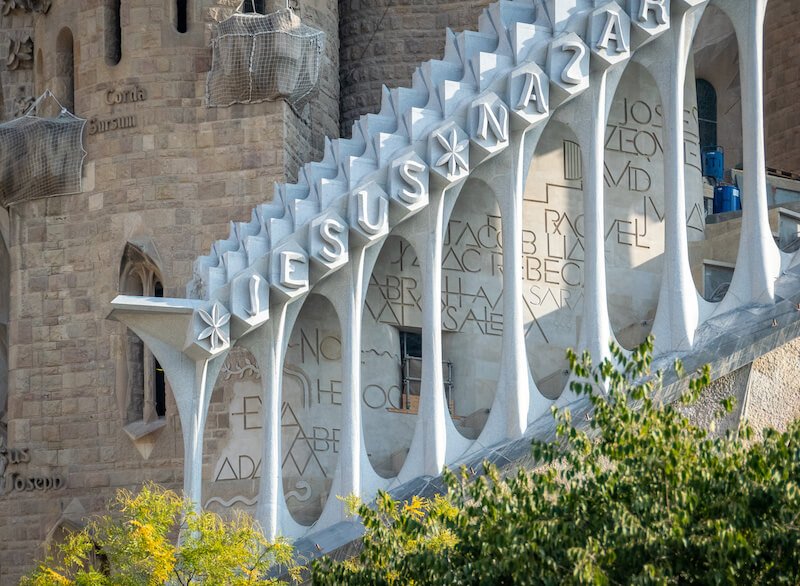
The latter offers you a more exciting view, taking in the downtown area of the city and Montjuïc.
However, if you are a Gaudí purist, you might get more out of examining the side he alone designed.
Both towers are now served by an elevator which takes you up, but you walk down a winding staircase to come down.
It’s not too strenuous or hazardous, but there are a few hundred steps!
Some sensible footwear will serve you well here if you take this option (and for any day out sightseeing in Barcelona, frankly).
Don’t choose a time without thinking

Talking of strenuous activity, if you do buy a ticket, choose the time of day carefully.
La Sagrada Familia is likely to be relatively less crowded first thing in the morning or later in the afternoon.
In peak season – April through September – the basilica is open until 8 PM. The full timetable is:
- November-February: Monday-Saturday 9:00 AM to 6:00 PM. Sundays 10:30 AM to 6:00 PM.
- March, October: Monday-Saturday 9:00 AM to 7:00 PM. Sundays 10:30 AM to 7:00 PM.
- April-September: Monday through Saturday 9:00 AM to 8:00 PM. Sundays 10:30 AM to 8:00 PM.
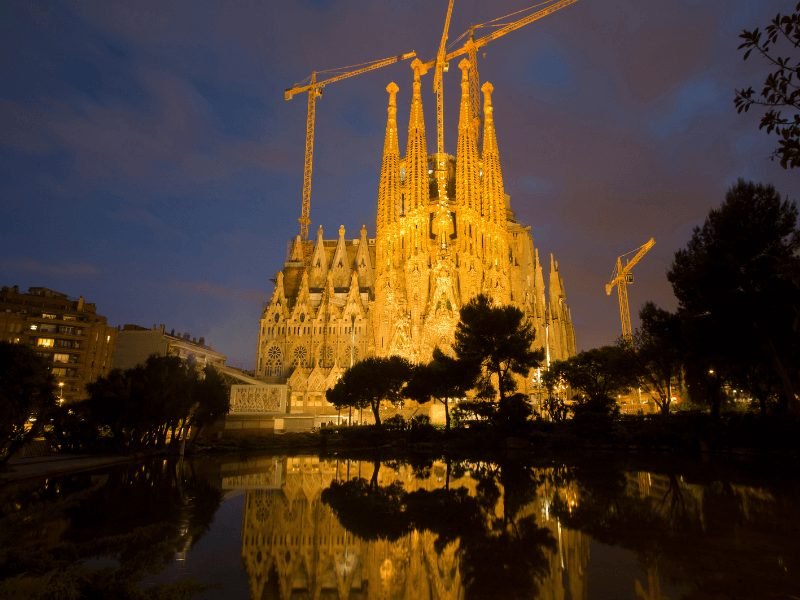
Last tickets are usually 45 minutes before closing time, although I would personally give myself a little more time so as not to rush.
Finally, if you are visiting in the summer, it’s a good idea to avoid early afternoon anyway.
La Sagrada Familia might have high ceilings but all that body heat can still make it a little stuffy, and if you are walking down from the tower, you don’t want to overheat!
Don’t break the dress code.
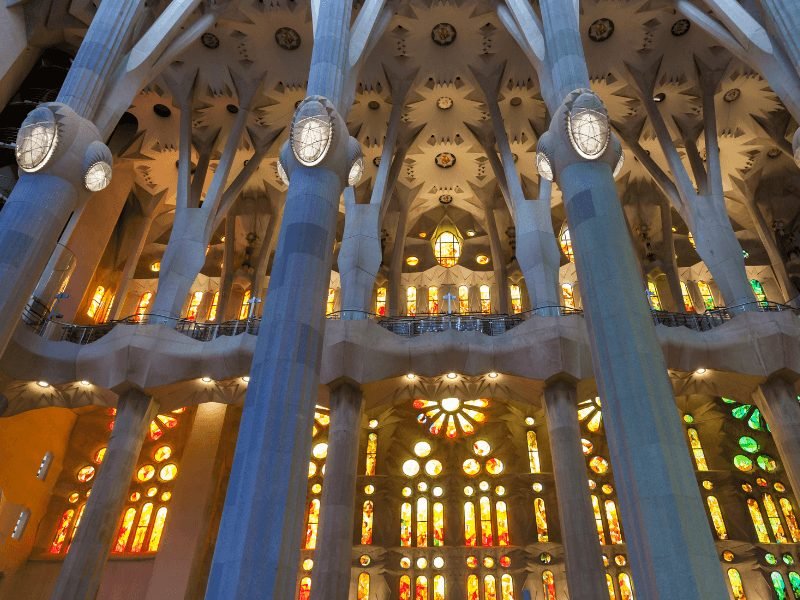
Personally, I have never seen anyone denied access to La Sagrada Familia but the dress code is surprisingly strict.
So even if you don’t rock up in a swimsuit, in theory you could have problems getting in.
Heads, shoulders, and knees are the key words (toes get a pass).
That means hats are not permitted. Shoulders should be covered, so no sleeveless tank tops or blouses. Shorts, dresses and skirts should be below the knee.
For the ladies, showing off a lot of back or a lot of front is also a no-no.
More obviously, any offensive or distracting designs are also not permitted, nor is wearing anything with a view to promoting a product.
Similarly, remember where you are when taking photos.
Using flash photography (which is outright not permitted), taking selfies, saying or doing goofy things while taking snaps should all be kept to a minimum.
Don’t forget it’s a church.
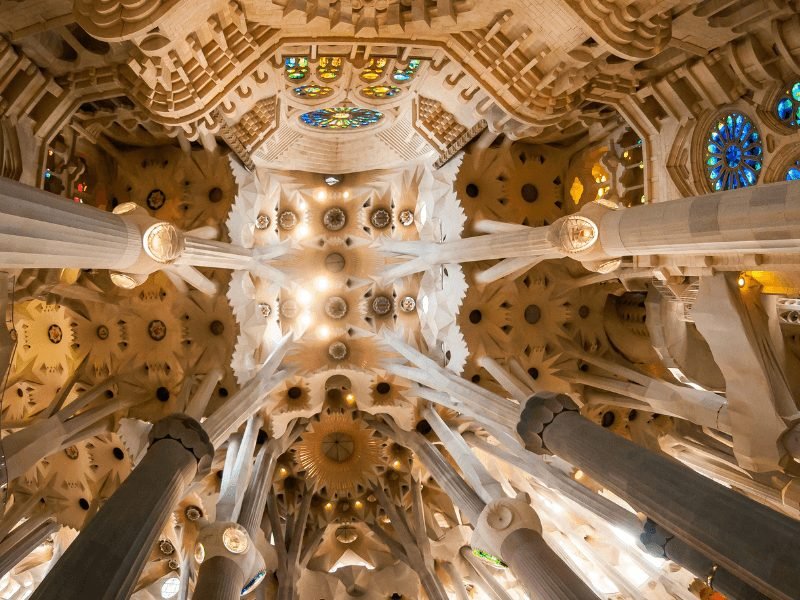
While we are thinking of spiritual considerations, remember that La Sagrada Familia is a fully functioning church — not just a tourist spot!
That means at 9 AM every Sunday, you can attend mass there.
Obviously, this experience will mean more to Christians than it will to the godless heathens among you.
It’s also an opportunity to gain free entry and actually see La Sagrada Familia being used for its true purpose.
Bear in mind, you won’t be the only visitor with this idea.
Capacity is limited and I have personally never tried to go (although I did pull the same trick at Barcelona Cathedral once).
That said, if you are on the fence about paying to get in (or if, you know, you’re a Catholic!) it might be an interesting idea.
Don’t go without doing a little homework.
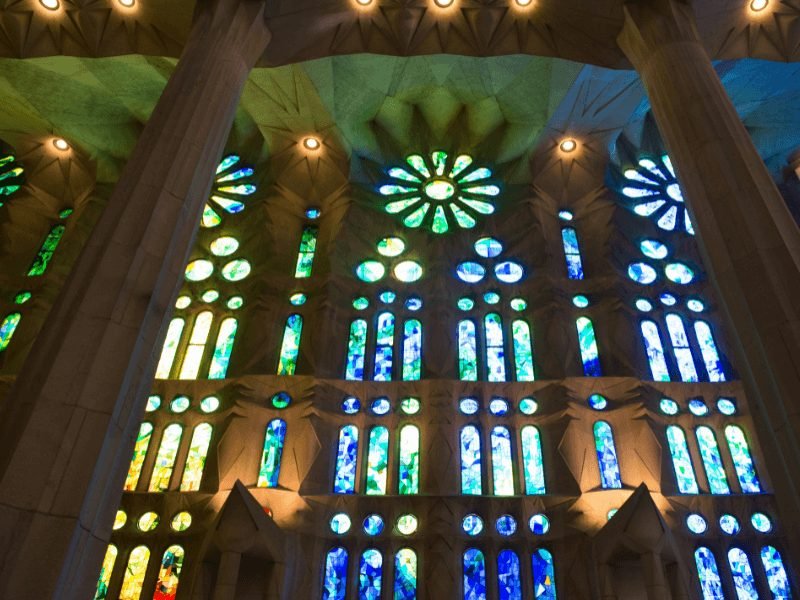
This is probably the most optional Sagrada Familia tip, and if you are reading this, it’s probably a good sign that you are trying to find out about the basilica before you make the trip.
I really recommend that. Guides, whether audio or flesh-based, are very informative, but if it’s your first time hearing a lot of the information, it might be hard to take it all in.
I personally find I do much better with this kind of information if I have read something or watched something in advance.
Suddenly, the information during the visit is a repetition of some of the things I already learned, rather than just a sea of new facts.
Don’t miss out on these videos!
With that borne in mind, I highly recommend adding this video to your list of things to see in advance.
It’ll help you get a true understanding of what you’ll be seeing at the basilica.
Produced in 2013, it is an animation showing the rather stunning rate of progress at which building work has taken place in recent years – as well as the considerable additions to come before the work is set to finish in 2026.
That year is the centenary of Antoni Gaudí’s tragic sudden death in a tram accident, and this video shows real photos of the building’s progress.
It is astonishing to see both how much has been done recently and how little had been completed during Gaudí’s lifetime.
Watching these videos before visiting the Sagrada Familia will certainly enrich of your appreciation of it.
Don’t miss out on the surrounding area!
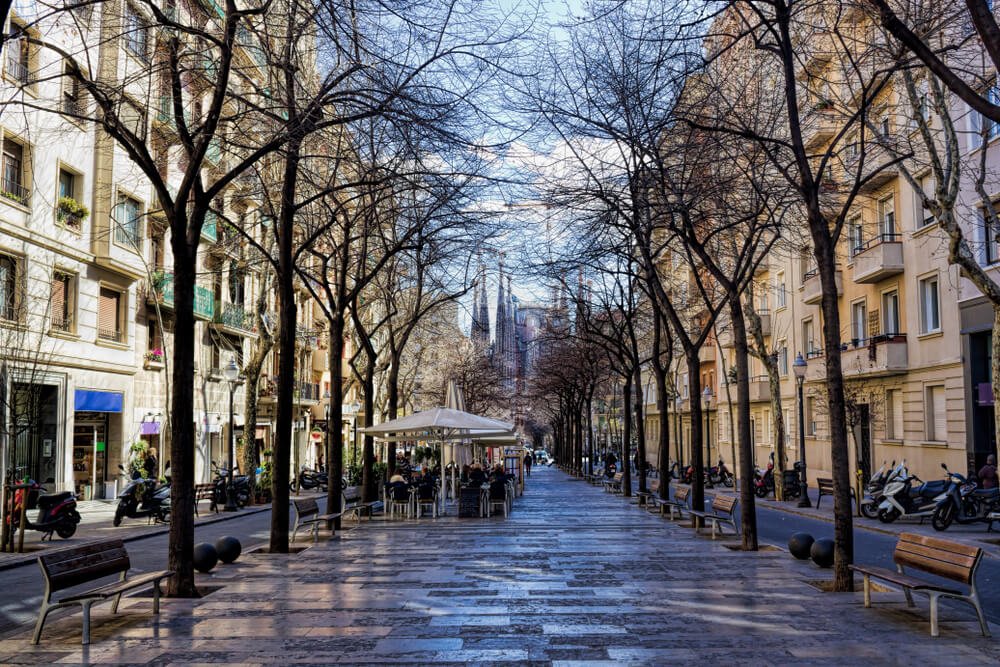
At the end of your visit, you might feel inclined to head to the metro station and catch a train to your next destination, but – beyond the aforementioned gardens – there are a few things to see around here.
Avinguda de Gaudí is a pedestrianized street that veers off diagonally from La Sagrada Familia, and while it’s undeniably touristy, it makes for a nice walk.
Eating here would be pricey, but you do have the more economic option of a coffee in front of the basilica!
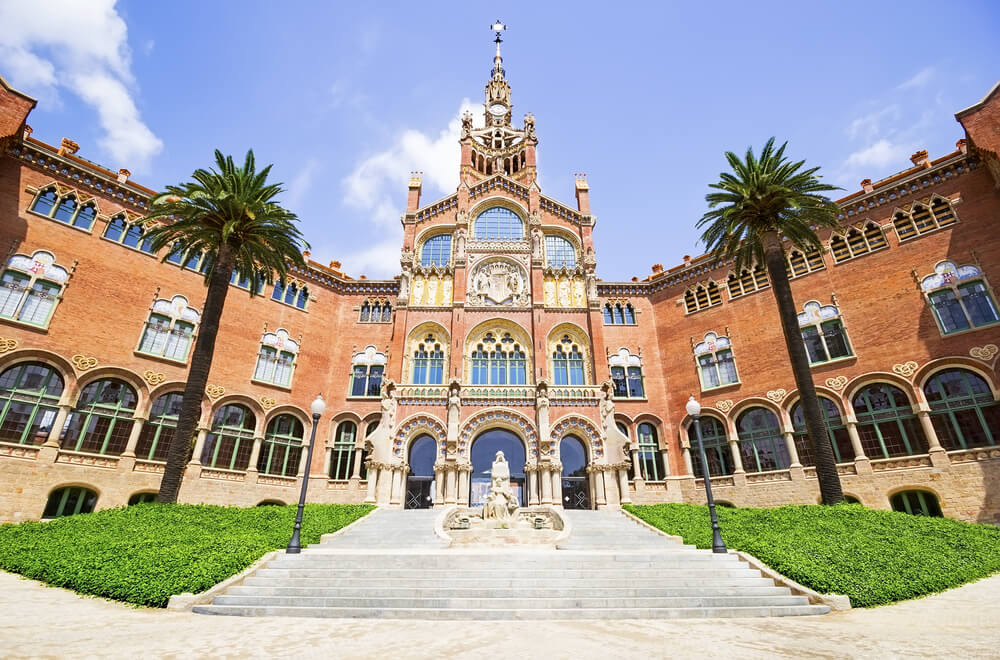
If you walk to the end of the street, it will take you up to the Recinte Modernista Sant Pau Barcelona, a modernist masterpiece which was originally designed as a hospital.
Its designer, Lluís Domènech I Montaner, would have a good case for being the city’s most famous architect if it wasn’t for you-know-who.
Don’t feel like you are in the middle of nowhere
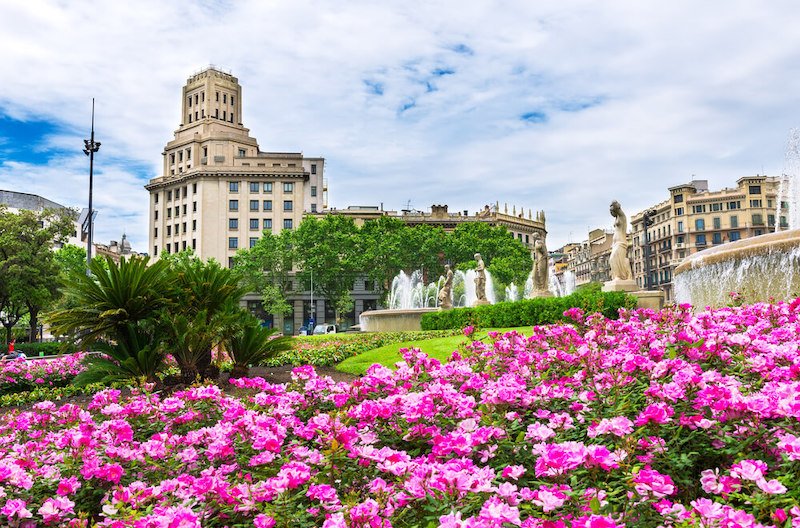
Looking at the metro map, La Sagrada Familia can feel a little away from everything else focused around Plaça Catalunya.
But Barcelona is an eminently walkable city. If you head downtown from the basilica, you will get to Arc de Triomf in around twenty minutes, which in turn means you are a stone’s throw from Parc de la Ciutadella.
If you have lunch after your visit and want to walk it off, even the beach is only about 40 minutes’ walk in the same direction.
Alternatively, walking south-west from La Sagrada Familia (the direction that the Passion Façade faces, along Calle de Mallorca or Calle de València) will take you to Passeig de Gràcia in about twenty minutes.
This is a nice alternative if the metro is swarming!

Leo McPartland flew to Barcelona on a romantic whim in 2009 and never made it home. He spends his time wandering the city’s streets, beaches and mountains and is at his happiest discussing language learning, comedy and his creative pursuits. He is still more than capable of getting totally lost in Barri Gòtic.